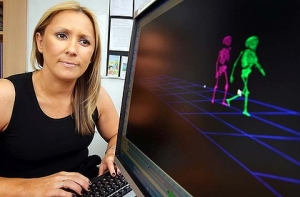Walking the Talk
Research news
Deakin University’s newly appointed Professor of Clinical Psychology Nicole Rinehart is on a mission to find better ways of detecting and treating the sometimes devastating condition of autism along with its close cousin, Asperger’s Syndrome.
“Autism can be a devastating diagnosis, changing the entire course of a child’s development,” said Professor Rinehart who works at the School of Psychology and is a member of the Centre for Mental Health and Wellbeing Research.
This doesn’t, however, deter Professor Rinehart who has made significant inroads in the diagnosis of this disease, and in a most unexpected way, namely, through the analysis of how children with this condition walk.
“That’s right, we were as surprised as everyone else when we discovered that children with what is now called autism spectrum disorder (ASD) have a very idiosyncratic gait or walking style," she said.
"It allows us not only to peek into the neurodevelopmental window of this condition, but also perhaps develop new ways of detecting or diagnosing it.”
Professor Rinehart’s work also addresses another problem in this area of clinical practice – what to call the condition.
“Right from the early days, when the condition was first described, it was clear that there was a huge variability in the types of symptoms these children showed,” she said.
“This led to the difficulty of deciding whether we were in fact describing one clinical condition or a number of different conditions with, if you like, blurred edges, or whether, in reality, it was only one condition that expresses itself in a variety of ways."
However, it would seem the American Psychiatric Association has decided the matter by not including Autism or Asperger’s Syndrome as separate clinical entities in the fifth version of its Diagnostic and Statistical Manual (DSM-5), the diagnostic ‘bible’ of the psychiatric and psychological community.
“Yes, that’s right,” said Professor Rinehart.
"The newly minted DSM-5, which the clinical community eagerly awaited, no longer has Autism or Asperger’s Syndrome as separate conditions, but instead has amalgamated these into an overarching category called autism spectrum disorders."
Not everyone agrees with this decision.
“It has caused a few ripples,” said Professor Rinehart with a glint in her eye. “The more interesting question for us is what if our gait analysis clearly differentiates so-called autism spectrum disorder children into the old categories of autism and Asperger’s syndrome – what then?”
But can the way a person walks really tell us something about the causes of autism spectrum disorder?
“Walking is a very complex neurobiological phenomenon and also one of the key indicia of being human, so perhaps the exploration of problems with walking will tell us a lot about brain development in the child at a time when connections in the child’s brain are being laid down, sometimes permanently,” said Professor Rinehart.
It seems a large problem given the extraordinary complexity of the brain.
“Yes, it’s a challenge, and it will involve a lot of work," said Professor Rinehart as the sixth email in as many minutes chimes its arrival on her laptop.
“But I wouldn’t have it any other way! We have to keep moving on autism and believe our gait research is an important way to gain insight into the condition.”
Share this story
 Professor Nicole Rinehart
Professor Nicole Rinehart
